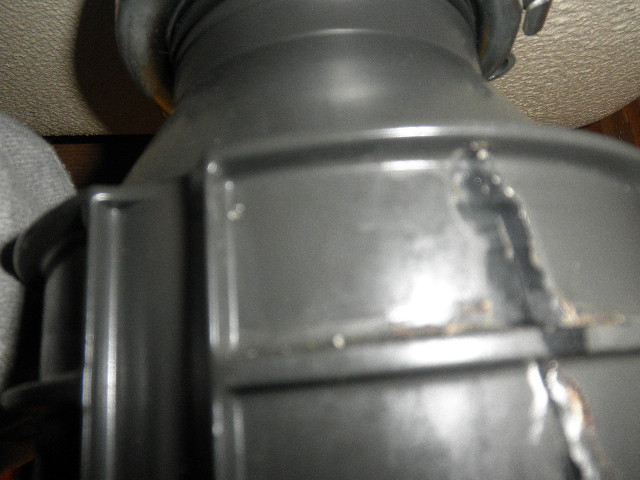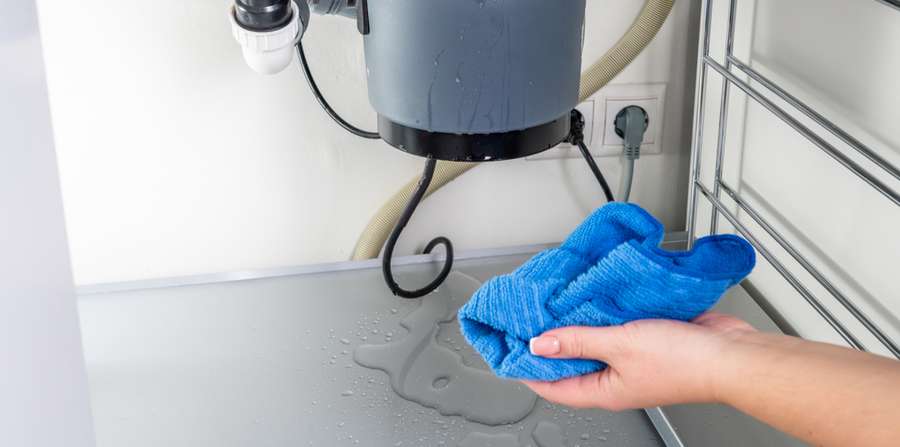Useful Techniques for Repairing a Dripping Garbage Disposal
Useful Techniques for Repairing a Dripping Garbage Disposal
Blog Article
Just how do you really feel in regards to The Handy Guide To Fixing Your Garbage Disposal Leaking?

Waste disposal unit are important cooking area appliances that assist in disposing of food waste efficiently. However, a leaking waste disposal unit can be an irritating and untidy trouble to deal with. Thankfully, numerous leaks can be dealt with easily with a few basic steps. In this write-up, we will certainly discuss just how to fix a leaking garbage disposal successfully.
Introduction
Waste disposal unit are set up under kitchen sinks and are developed to shred food waste right into smaller pieces, allowing it to travel through the plumbing system easily. While these tools are generally reliable, leaks can occur over time due to deterioration, loose connections, or damage to the device.
Usual Reasons For Leakages in Waste Disposals
Worn Seals and Gaskets
Seals and gaskets play a crucial role in preventing water from dripping out of the waste disposal unit. Over time, these parts can weaken, leading to leakages around the disposal system.
Loose Links
The connections between the waste disposal unit and the plumbing system can come to be loosened in time, creating water to leak out throughout procedure.
Splits or Holes in the Disposal Device
Physical damage to the garbage disposal, such as cracks or holes in the real estate, can also cause leakages.
Identifying the Source of the Leakage
Prior to trying to deal with a leaking garbage disposal, it is vital to recognize the resource of the leakage. This can typically be done through visual inspection or by conducting straightforward examinations.
Visual Examination
Evaluate the waste disposal unit device meticulously for any kind of indications of water leak. Pay attention to locations around seals, gaskets, and connection points.
Examining for Leaks
One way to examine for leaks is by running water with the disposal device and checking for any type of noticeable indicators of leak.
Devices and Materials Needed for Taking Care Of a Leaking Waste Disposal Unit
Before starting the repair procedure, gather the necessary tools and materials, consisting of a screwdriver, adjustable wrench, plumbing's putty, substitute seals or gaskets, and epoxy or patching product for fixing splits or openings.
Step-by-Step Guide to Taking Care Of a Dripping Waste Disposal Unit
Shut off the Power
Before attempting any repair work, make sure that the power to the waste disposal unit unit is switched off to stop the danger of electrical shock.
Find the Leak
Determine the exact area of the leak and establish the cause.
Tighten Links
Use a wrench to tighten up any loose links in between the disposal unit and the plumbing system.
Change Seals or Gaskets
If the leakage is because of used seals or gaskets, eliminate the old components and replace them with brand-new ones.
Patching Splits or Openings
For splits or openings in the disposal unit, usage epoxy or a suitable patching product to secure the damaged area.
Checking the Waste Disposal Unit After Fixing
Once the repair service is full, examine the garbage disposal by running water through it to make sure that the leak has been fixed.
Preventive Maintenance Tips to Prevent Future Leakages
To avoid future leaks, it is vital to perform normal upkeep on your garbage disposal. This includes keeping it clean, staying clear of placing non-food things or difficult objects down the disposal, and regularly checking for leakages or other problems.
Conclusion
In conclusion, taking care of a leaking garbage disposal is a relatively straightforward procedure that can be finished with standard tools and materials. By following the actions outlined in this post and exercising precautionary maintenance, you can maintain your garbage disposal in good working problem and prevent expensive repair services in the future.
HOW TO REPAIR A LEAKING GARBAGE DISPOSAL
The first thing to do if your garbage disposal starts to leak or exhibits other symptoms of wear and tear is to inspect the appliance quickly. Before making any repairs, check for any obvious cracks or damaged parts and turn the disposal off at the power source. Once you have located the issue, several tools might assist you in solving it. Many resources are available to assist you in putting your disposal back in working order, whether by purchasing new parts or professional assistance from a repair technician. So immediately act if you need help with leaky garbage disposal. You can rapidly resolve the problem and enjoy smoothly functioning appliances with thorough troubleshooting and help from web resources.
Food waste is disposed of using a garbage disposal system, which grinds and flushes it down the toilet. A garbage disposal is a motorized device with one or more rotating blades that grinds up food waste into little bits. They are commonly found under the kitchen sink. A dishwasher inlet or connector is often built into garbage disposals, allowing extra water to drain into the sink’s dishwasher. Several things, such as clogs, worn-out components, or damage to the inside walls of the unit, can bring on garbage disposal leaks or other problems.
WHAT ARE SOME COMMON PROBLEMS WITH GARBAGE DISPOSALS?
Jamming: One of the most frequent issues with garbage disposals is jamming. It occurs when hard or fibrous materials, such as bones, potato peels, or fruit pits, get stuck in the disposal’s blades or impeller. It can prevent the unit from operating correctly or cause it to make unusual noises. Clogging: If too much food waste or non-food items are put into the disposal at once, it can lead to clogging. Clogged disposal may result in slow drainage or a complete backup of water in the sink. Grease and fats can also solidify inside the disposal and contribute to clogging. Leaks: Garbage disposals can develop leaks over time. The most common areas for leaks are the sink flange, the discharge pipe connections, or the dishwasher connection. Leaks can cause water damage and need to be addressed promptly. Foul odors: Food residue can build up in disposal over time and cause unpleasant odors. Bacteria and mold growth inside the unit can also contribute to foul smells. Dull blades: The grinding blades in the disposal can become dull over time, resulting in inefficient chopping and grinding of food waste. That may lead to more frequent jams and increased strain on the motor. HOW CAN YOU TELL IF YOUR GARBAGE DISPOSAL IS LEAKING?
Visible water: Check underneath the sink where the garbage disposal is installed. If you notice water pooling or dripping around the unit or any adjacent pipes, it’s a clear sign of a leak. Musty odor: A persistent or moldy smell from your kitchen sink area could indicate a hidden leak. The moisture from a leaking garbage disposal can create a damp environment that promotes mold and mildew growth. Water damage: Examine the area surrounding the garbage disposal for any signs of water damage. Look for water stains, discoloration, or warping on the cabinet floor or walls beneath the sink. Decreased performance: A leak in the garbage disposal can affect its functionality. If you notice that the disposal is not grinding food waste properly or is making unusual noises, it could be due to water damage or a leak compromising its mechanisms. Rust or corrosion: Inspect the garbage disposal for any signs of rust or corrosion. A leaking unit can cause metal components to deteriorate over time. Look for rust-colored stains or deterioration on the disposal unit or surrounding pipes. https://theappliancepeople.com/how-to-repair-a-leaking-garbage-disposal/

As a fervent person who reads about How to fix a pretty consistent leak from my garbage disposal, I imagined sharing that information was a good idea. So long as you liked our blog posting plz don't forget to share it. Thank you so much for your time spent reading it.
Book Your Appointment Report this page